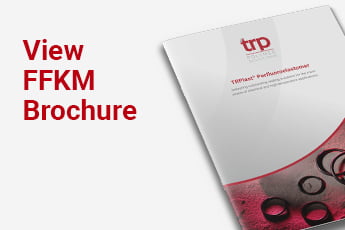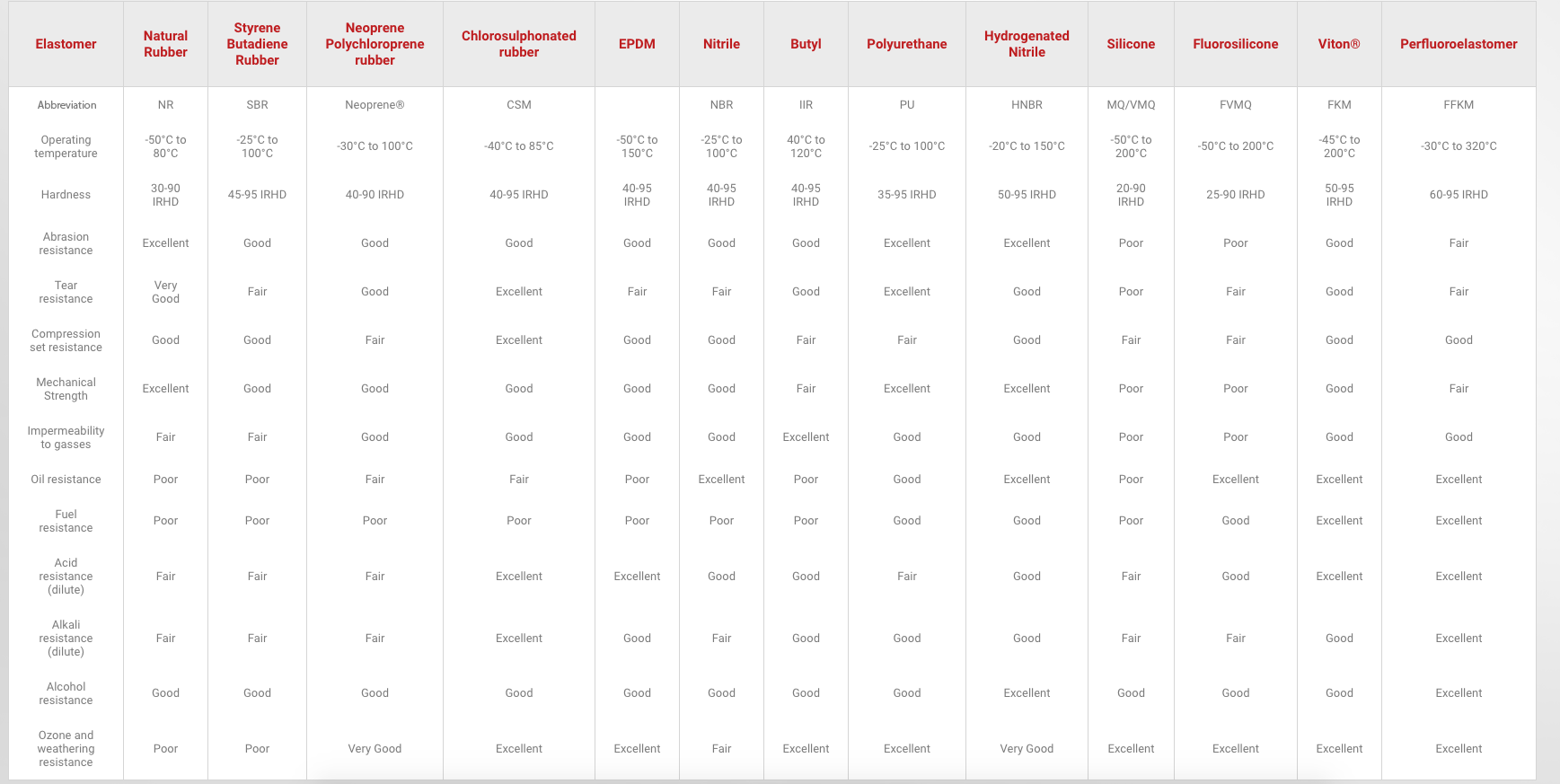Rubber vs silicone ‘O’ rings
When choosing between different types of ‘O’ ring materials, a common conundrum is whether to opt for rubber ‘O’ rings or silicone ‘O’ rings. In this blog, TRP Polymer Solutions assesses the pros and cons of rubber vs silicone ‘O’ rings to assist with your decision making process.
‘O’ ring seals are essential to the efficient performance of countless machinery across the industry. Over the years, a wide variety of elastomers have been developed in the search for the optimal ‘O’ ring material. Within that range, we can count off not one but several types of synthetic rubber, including silicone, which is distinguishable from other rubbers by its atomic structure.
Types of ‘O’ ring materials
Generally speaking, all elastomers are considered to be rubbers by the fact their dimensions can be altered under stress and returned to their original form once the stress has been removed. Below, we’ve highlighted just some of the more common elastomers or synthetic rubbers, including silicone, that can be developed into rubber ‘O’ rings.
FKM
Fluoroelastomer, or FKM as it is commonly known, contains strong carbon-fluorine bonds, giving it high chemical, thermal and oxidation resistance. It is a high-performance synthetic rubber that is particularly well-suited to applications involving aggressive chemicals and fuels. FKM boasts excellent high-temperature resistance and can be used in environments involving explosive gases, which makes it a commonly used rubber ‘O’ ring material in the oil and gas industry.
FFKM
Perfluoroelastomer, or FFKM, combines the chemical resistance of polytetrafluoroethylene (PTFE) with the elasticity of FKM. A fully fluorinated backbone guarantees its chemical, oxidative and thermal stability and is ideal for demanding applications. As such, FFKM rubber ‘O’ rings provide high seal integrity, reduced maintenance and operating costs, and improved safety. We developed our own unique TRPlast range of FFKMs, which offer some of the highest levels of performance available.
EPDM
EPDM is a synthetic rubber with extremely inert chemical properties. Offering good all-round performance (although not recommended for contact with fuels and oils), EPDM offers excellent weathering, heat, ozone and steam resistance. Commonly used as a lower cost polymer, with good processing abilities, EPDM’s highly inert nature makes it less adherent than other elastomers, which can be a limitation.
Nitrile
Nitrile was borne out of the search for an elastomer that could withstand oil and fuels. Also known as Buna-N or Perbunan, nitrile exhibits excellent performance with oils and fuels, which makes it a useful rubber ‘O’ ring and gasket material. Several more advanced rubber materials, such as FFKM, have superseded nitrile in terms of performance and resistance to modern fuels. However, Nitrile remains a useful solution.
Silicone
Silicone is made up of a backbone of silicon atoms with alternating oxygen atoms. These high energy silicon-oxygen bonds make silicone more resistant to heat than many other elastomeric materials. This inorganic backbone also makes silicone more resistant to fungus and gives it excellent weathering properties. Silicone’s strength is not adversely affected by the choice of colour. However, it is not regarded a particularly high-strength material and does tear relatively easily.
In conclusion, silicone ‘O’ rings can be applied to high-temperature applications or where damage from the elements may otherwise be an issue. However, due to silicone’s poor tear and abrasion resistance, it should only really be considered for static rather than dynamic applications. In such cases, there are several other rubber ‘O’ ring materials that offer a more well-rounded package of benefits, including thermal stability and chemical resistance.
As expert ‘O’ ring manufacturers, TRP Polymer Solutions can develop the ideal seal solution for you. For more guidance about the different types of ‘O’ ring materials available and why you should choose an ‘O’ ring over a rubber gasket, or to discuss how we can help meet your application requirements, call TRP Polymer Solutions today on +44(0)1432 268899 or email sales@trp.co.uk.






